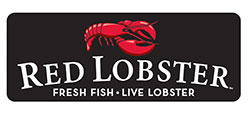Orlando, Florida, USA-headquartered Darden Restaurants, Inc. on March 21 reported that sales for the third quarter ending on February 23, 2014, fell by 1.1% to $2.23 billion, compared to $2.26 billion generated in the third quarter of 2013. The result reflects a blended same-restaurant sales decline of 5.6% for Olive Garden, Red Lobster and LongHorn Steakhouse, and a same restaurant-sales decline of 0.7% for the company’s Specialty Restaurant Group partially offset by the operation of 83 net new restaurants compared to the third quarter last year.
 Earnings during the third quarter declined by 18% as both Red Lobster and Olive Garden recorded weaker sales. Darden profits were also down, slipping to $109.7 million in comparison with $134.4 million realized during the same period the year before.
Earnings during the third quarter declined by 18% as both Red Lobster and Olive Garden recorded weaker sales. Darden profits were also down, slipping to $109.7 million in comparison with $134.4 million realized during the same period the year before.
Quarterly sales rung up at Red Lobster, the largest seafood chain and biggest foodservice purveyor of fishery products in North America, amounted to $611 million. This was 8.7% lower than the prior year’s like period, which reflected a same-restaurant sales decline of 8.8% partially offset by one net new restaurant. The company operates 679 outlets in the United States and 27 units in Canada.
Sales at Darden’s Olive Garden restaurants during the third quarter were $929 million, or 3.4% lower than the previous year due to its US same-restaurant sales decline of 5.4% partially offset by revenue from 18 net new restaurants.
LongHorn Steakhouse’s quarterly sales of $363 million were 9.1% higher than the same period in 2013, driven by revenue from 37 net new restaurants and its US same-restaurant sales increase of 0.3%.
Darden’s Specialty Restaurant Group’s third quarter sales of $320 million were 11.6% higher than the prior year, driven by same-restaurant sales increases of 0.8% at Bahama Breeze and 0.1% at The Capital Grille, offset by same-restaurant sales declines of 0.1% at Yard House, 2.9% at Eddie V’s, and 4.4% at Seasons 52. Sales growth for the Group also reflected revenue from five new restaurants at The Capital Grille, four at Bahama Breeze, ten at Seasons 52, two at Eddie V’s, and five at Yard House.
Negative performances by the Group’s two leading chains were attributed partially to the impact of severe winter weather (approximately 160 basis points) and the adverse effect of a shift in the Thanksgiving holiday week (approximately 100 basis points). Excluding these factors, according to Darden, same-restaurant sales for the third quarter would have been up approximately +2.9% at LongHorn Steakhouse, down approximately 2.8% at Olive Garden, down approximately 6.2% at Red Lobster, and up approximately 1.9% at the Specialty Restaurant Group.
The rising price of shrimp no doubt had an impact on the bottom line at Red Lobster as well as at other restaurants in the Group, as Darden has reportedly shelled out an additional $30 million for shrimp purchases during the past year. During the third quarter prices were said to have surged 30% as a result of curtailment in supplies of farm-raised Penaeus vannamei from Asia due to ongoing ESE disease problems.
Declaring a quarterly dividend of 55 cents per share, Darden’s board of directors reported that the effective tax rate for the third quarter of fiscal 2014 was 9.7%. That compared to 22.3% for the comparable prior year period, due primarily to lower earnings and the timing of certain tax benefits associated with an employee benefit plan.
Meanwhile, Darden announced that it remains on track to execute a previously announced plan to separate the Red Lobster business through either a tax-free spin-off to shareholders or a sale of the Red Lobster business. The sale process is well underway, and the company has also begun the process of establishing separate financials and associated infrastructure for the Red Lobster business should the board of directors determine that the spin-off alternative creates more value for shareholders.
 “As consumer demand dynamics have changed, Red Lobster’s priorities and operating support requirements have come to differ meaningfully from those of Darden’s other brands, which are having greater success increasing appeal among consumers outside their core guest profiles,” according to a statement posted on Darden’s website. “By establishing two independent companies, a separation will better enable the management teams of each company to focus their exclusive attention on their distinct value creation opportunities.”
“As consumer demand dynamics have changed, Red Lobster’s priorities and operating support requirements have come to differ meaningfully from those of Darden’s other brands, which are having greater success increasing appeal among consumers outside their core guest profiles,” according to a statement posted on Darden’s website. “By establishing two independent companies, a separation will better enable the management teams of each company to focus their exclusive attention on their distinct value creation opportunities.”





